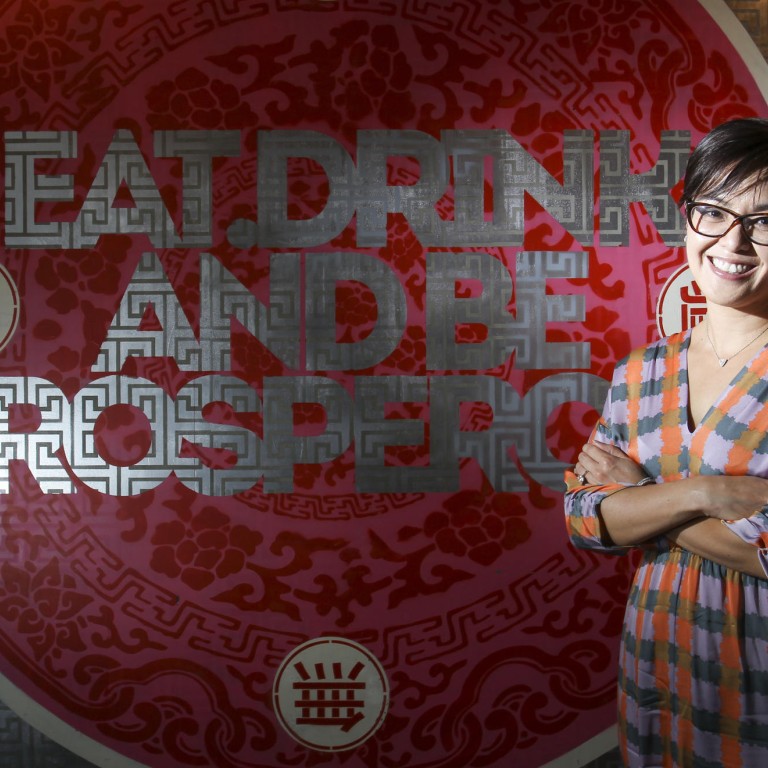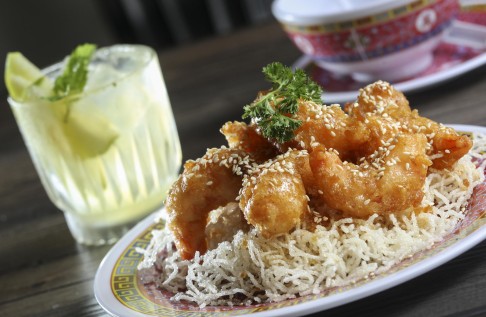
Fu Lu Shou's Westernised Chinese dishes are a surprise hit
Fu Lu Shou's Westernised Chinese dishes have proved an unexpected hit, writes Vicki Williams
A Hollywood Road restaurant serving Westernised Chinese cuisine has become an unlikely success. Fu Lu Shou's menu highlights dishes that have remained classics for decades in Chinatown restaurants in countries such as Australia, the US and Britain.
A meal could start with prawn toast, move on to sweet and sour pork, honey prawns, kung pao chicken and chow mein, and finish with toffee apples and fortune cookies.
Cantonese cuisine is the origin, or inspiration, for many of the dishes that fall under this Westernised Chinese umbrella. But the dishes are defined by their source, as they have been adapted to suit non-Chinese palates by, for example, adding ketchup to a sweet and sour sauce. Some dishes are from the 1970s, the decade that revered sesame prawn toast.
Some diners come back three times a week … it must be food that they miss
In cases like chop suey, the dishes are not even found in China. This is food for people who can't find authentic Chinese cuisine, hardly a problem in Hong Kong.
Ping Lam was looking for a commercial property for her expanding nail spa business, when she came across a space that was formerly occupied by the private kitchen TBLS.
While it was not right for her original needs, she thought that the premises, with its rooftop terrace, was too much of a gem to resist.
She took the lease and decided to open a restaurant and bar, with the theme and cuisine concepts inspired by the building itself, with its 1970s and '80s interior design elements. On the surface this may sound like the whimsical thinking of someone with more money than sense. But delving deeper, Lam has the background of someone who knows something about success.
An instant hit since opening in May, there is no indication of her restaurant's popularity waning. It attracts a 50/50 mix of locals and expats of all ages and backgrounds, including A-listers and celebrities.
"When I saw the space, it seemed perfect as a venue for a combination casual eatery and rooftop bar. And because it was in an old Chinese building, with original design features, it seemed obvious to play with the theme of old-school Chinese," says Lam.
Lam grew up familiar with the Australian version of Chinatown cuisine. She moved with her Hong Kong-born parents to Australia when she was two years old, settling in Sydney, where her parents ran a number of successful Chinese restaurants. She has been back in Hong Kong for about 18 months.
This background came in handy in several ways. Her mother provided many of the recipes, such as the one for what Lam describes as a "kick-arse prawn toast".
Aside from the hip Asian-inspired cocktails and the rooftop, the nostalgic food is the main attraction for most Westerners and Chinese who grew up in the West.

"It is food that I missed, and as some of our diners come back three times a week, it seems to be food they miss, too," she says.
The menu is also a hit with a younger Hong Kong crowd who want to try something different, she says. Favoured dishes are the sweet and sour pork, hot and sour soup and fried tofu with spicy salt.
The fact it's a quality dining experience is part of its appeal. Lam prides herself on using good ingredients, taking no shortcuts, and using authentic cooking techniques. "For example, the prawn component of the sesame prawn toast is prepared in a traditional way, and it's all prawn. We also make our own stocks," Lam says.
Before starting a business, Lam had a high-flying career in corporate marketing and strategy, and she has applied those skills to her the business.
Perhaps that will enable her to succeed where others have failed. In May 2008, Dining Wok opened, serving American Chinese cuisine.
At the time, a reviewer wrote that although there was a certain nostalgia in seeing dishes such as egg fu yung, Mongolian beef and mu shu pork on a menu, "they're still second-rate versions of authentic Chinese dishes".
It received mixed reviews from the city's other critics, with comments about meagre portions and high prices, and closed in late 2009.
The perception that, in Hong Kong, the food would be thought of as a bastardised version of authentic Chinese cuisine is one of the factors Lam considered when developing her business plan. She admits her restaurant is not somewhere that you would eat every night, and it may not be for everyone.
But she thinks that it has its place alongside Cantonese restaurants here, even though it is not in competition with them.


She thinks the concept has merit beyond the novelty factor. Not content to rest on her laurels, she is introducing new cocktails this month [August], and is developing new dishes.
"I believe in doing it right from the outset. I am a long-term kind of person, a thinker, a strategist, and I'm in this for the long haul," Lam says.
The restaurant's continued success in Hong Kong is not based wholly on the food. Lam says it is the combination of the food, the cocktails, the friendly relationship the staff have with customers and the space itself, that makes Fu Lu Shou unique.
Lam is not the only one who believes that the retro concept has long-term appeal - she has been approached more than once already to open the Fu Lu Shou concept overseas; for example, in New York.
